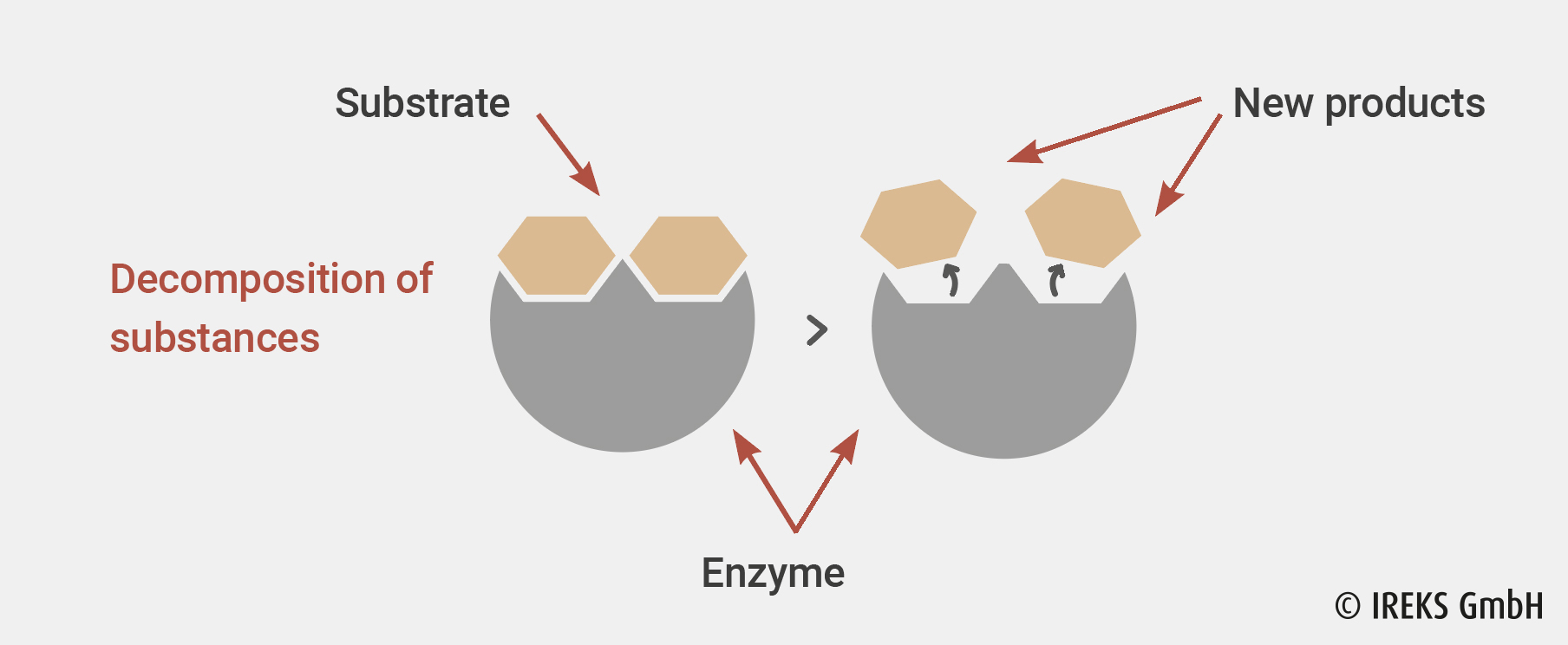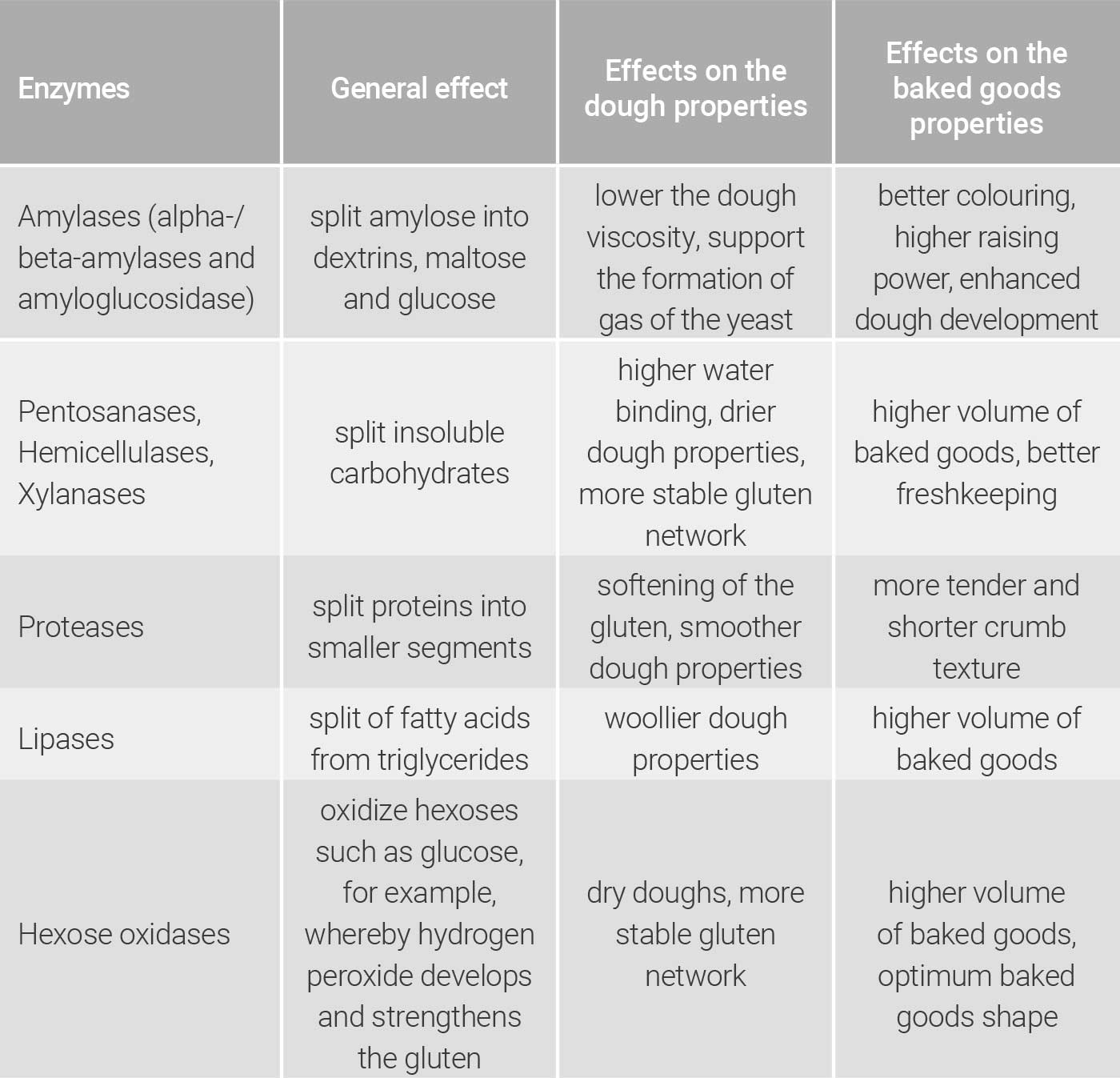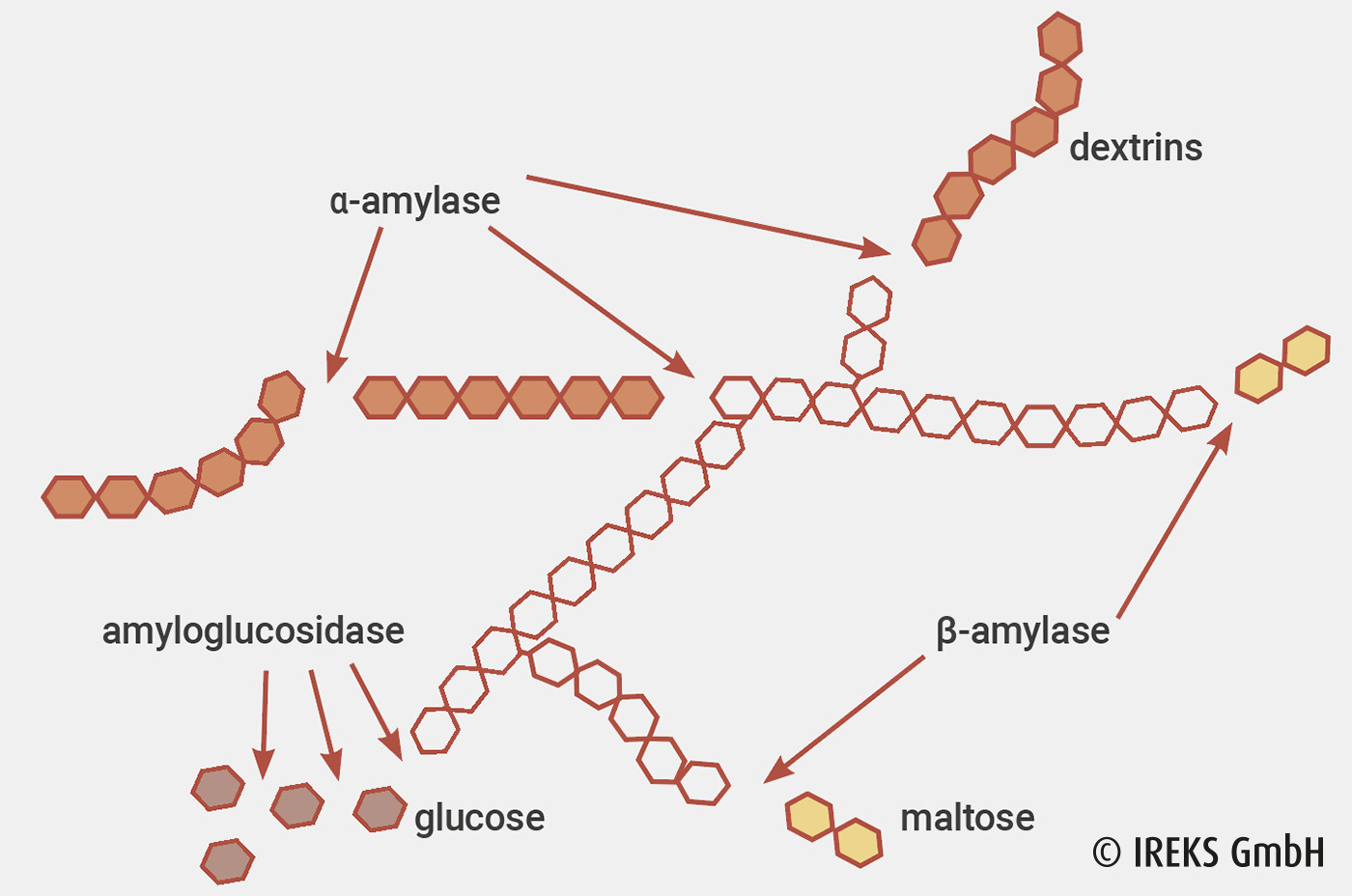Over and above the additives, enzymes also have a particular importance in the manufactureof baked goods. When producing improvers and mixes, enzymes are also an important component to balance out fluctuations in raw materials but also to fulfil the quality demands during the production of baked goods.
Enzymes have catalytic properties, i.e. they make a chemical reaction possible without using themselves up in the process. The effects of enzymes are very different, here the enzymes can form, change or decompose substances. The intensity of the effect depends on the temperature, time, pH value and the content of freely available water (aw value). The function principle and the effect of enzymes is specific and can be explained by the lock and key hypothesis, i.e. each enzyme can only change one specific substance. As a result of the protein structure of enzymes, the activity of the proteins can be controlled. This can take place by acid, heat or alcohol.
Following the nomenclature, enzymes are named after the substrate +”ase”. Amylase is composed of the substrate amylose and “ase”. According to the IUBMB = International Union of Biochemistry and Molecular Biology, the enzymes are divided into functional classes. In the area of baked goods, mainly hydrolases (splitting of a substrate in the presence of water) and oxidoreductases (catalysis of redox reactions, i.e. absorption of oxygen or release of hydrogen) are used.
As a result of their characteristics, enzymes are only used in very small quantities in improvers and mixes. In table 3.4, various enzymes with their general effect and influences on the dough and baked goods characteristics are shown. In addition, the effect of the amylases using the starch as an example is depicted in illustration 3.11.



